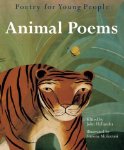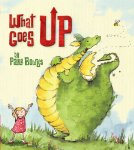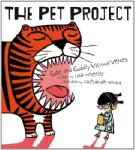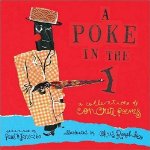Seek-and-find books are a wonderful invention. I often use them to get children who are bookaphobic to look at books, to give books a chance. Often, to their surprise, these children discover that the books I give them are entertaining and even funny. Bob Staake's seek-and-find books are an excellent example of this genre because the artwork is full of stories. Children can have a grand time coming up with their own tales as they explore the pictures.
 Look! Another Book!
Look! Another Book!
Bob Staake
Picture Book
For ages 5 and up
Little Brown, 2012, 978-0-31620459-0
It wasn’t that long ago when there were no seek-and-find books for children. Then the author of the Waldo books, Martin Handford, began creating his delightful titles, and authors and illustrators were inspired to create a wide variety of seek-and-find books.
In 2011 Bob Staake unleashed Look! A Book! on the world, and children (and adults) got to enjoy exploring his unique, colorful, and often funny illustrations. Now we have another Look! title that once again encourages readers to “Discover things, both small and large,” on the pages. Words play a minor role in the book and we are promised that there are more pictures “than you’ve ever seen.”
Sure enough, the pages are covered with colorful scenes that are jam packed with bizarre looking characters. The first scene is in a mall. A mall? A boring mall? No, this mall is nothing like any mall you or I have ever seen. In this mall, animals, humans, and robots are walking around, selling things, shopping, eating, and having adventures. There is a pirate ship - complete with a pirate - in the middle of a decorative pond. A sporting goods store and an antiques store are housed in houses, and in the food court there is a place where you can buy a honey baked haggis. There is a man who has a bat flying out of the top of his hat, and a boy wearing a cowboy outfit is riding on the back of a dolphin.
Well that certainly was wild! Perhaps the next scene will be more ‘normal.’ Here we are looking at a school and the school yard. It is recess time and the children are out running around and playing. Actually, there are animals here too. And robots. And a ghost and a monster. Is that an alien peering around the side of the school? It would appear that this scene is just as wonderfully bizarre as the last one.
In all there are seven scenes to explore in this book and each one is full of things to find. In addition, there are things going on in the artwork that encourages storytelling. For example, in the zoo scene there is a crab in a pot of fondue and for some reason the zoo keeper is walking a little green monster on a leash. Why are these things happening? Why are all the animals out of their cages and walking around? Children can have a little fun coming up with little stories to explain why these things are going on.
After readers are convinced that they have found all they can, they can go to the back of the book where there is a list of more things to find, things that are “MORE tough” to locate. Who can resist a challenge like this?
With a wonderful rhyming text, die-cuts on many of the pages, and remarkable illustrations, this is a book that will provide readers with hours of entertainment. This book demonstrates very well that pictures are indeed “worth A LOT!”
 Sylvia Long’s Mother Goose
Sylvia Long’s Mother Goose



























